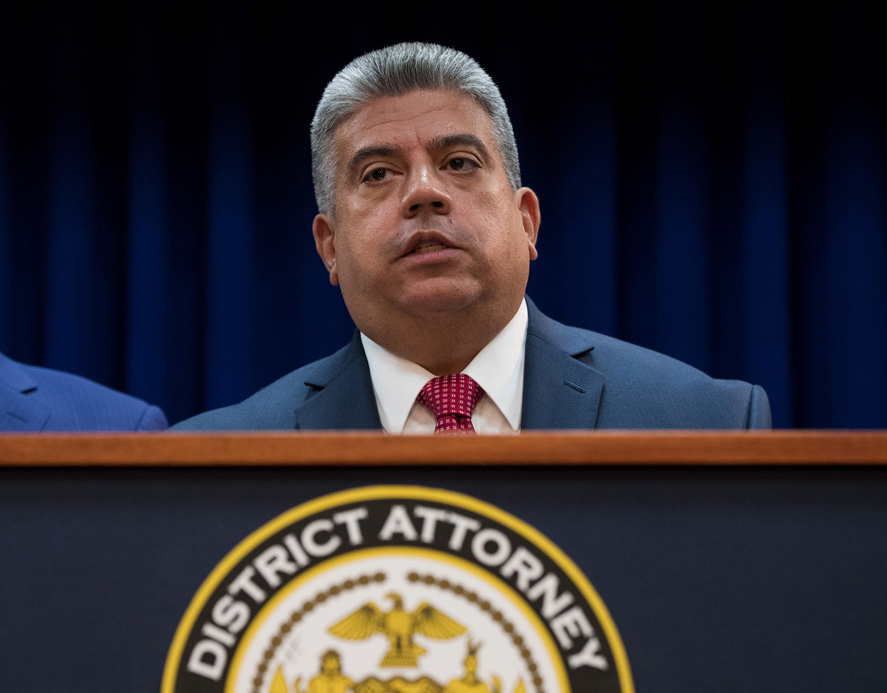

Man Charged With Brooklyn Park Murder Wrongfully Convicted
By Claudia Gutierrez
(The Kings County District Attorney’s Office in Brooklyn, in concert with The Innocence Project and WilmerHale Law Firm, released a 100-page report in July – “426 Years: An Examination of 25 Wrongful Convictions in Brooklyn, New York” – documenting cases reviewed by its “Conviction Review Unit” (CRU) of 25 people falsely convicted and ultimately exonerated. This is one of those stories.)
BROOKLYN, NY – In 1991, a woman in Brooklyn, New York was found nude and appeared to have been strangled and beaten to death in a park. Kevin Harrison (not his actual name) was convicted of second-degree murder and sentenced to 25 years to life in prison.
Harrison served approximately 25 years in prison before being exonerated of his conviction, based on an investigation carried about by the Brooklyn DA’s Conviction Review Unit (CRU). The CRU’s research found four issues largely responsible for the wrongful conviction of Harrison, which included improper cross-examinations, poor evidence handling, nondisclosure of favorable evidence, and suppression motions.
The night that the victim was murdered, Harrison told the police that he had been at the victim’s house. During his visit, the victim left to buy crack cocaine and Harrison ended up leaving her house before she returned.
The sole identifying witness in the investigation told police officers that the same night the victim was murdered, he was walking through the park with another witness in the case and said they 



The CRU’s investigation found that the witness was “under the influence of crack cocaine” at the time and police officers took note of this, however, “Those notes never were turned over to defense counsel.” This nondisclosure of favorable evidence is one of the various reasons the CRU concluded years later that Harrison was wrongfully convicted.
The second witness who was also walking through the park the night of the murder was not initially able to identify Harrison in the lineup, so the detective asked for all those present in the lineup to walk closer to the mirror and it was then that the witness identified Harrison as the perpetrator.
According to the CRU, “This was improper because Harrison had a limp or would have needed to walk with a crutch to the mirror and would have stood out. The detectives relied on this problematic identification rather than investigating more fully.”
Although the defense counsel attempted a motion to suppress this evidence presented by the second witness, it was denied by the court and this questionable evidence was upheld.
Harrison eventually was tried twice, with the first trial ending in a mistrial when the judge declared the defense counsel “ineffective as a matter of law,” meaning that there were a variety of factors that led the judge to believe that the defense counsel was not representing Harrison in the most effective way.
In the second trial, evidence which showed that the sole identifying witness had previously identified another individual other than Harrison as the perpetrator was never disclosed to the court. The same witness also testified that the “nighttime conditions under which he witnessed the incident were poor.”
Later in the trial, testimony from medical experts pointed to the fact that the killer had to have used a significant amount of force to kill the victim. This contradicted Harrison’s own testimony in which he stated that on the night of the victim’s murder “he had a cast on his leg and was using crutches due to a gunshot wound.”
The CRU also found that during the prosecution’s cross-examination of the defendant “the prosecution appeared unprepared and followed irrelevant or inappropriate lines of questioning,” specifically continuing to question Harrison’s injuries although his medical records “raised significant questions about his ability to carry out the heinous attack.”
Poor evidence handling was also discovered by the CRU in the case.
After Harrison’s conviction, his post-conviction counsel and the CRU wanted to test the metal pipes from the crime scene for DNA; however, the pipes were unable to be located in the NYPD Property Division records. There was no reasoning to explain how or why the pipes were not able to be located.
Based on the Conviction Review Unit’s thorough investigation into Harrison’s case they were able to conclude that he, along with 24 other individuals, was a victim of a wrongful conviction—that imprisoned him for 25 years.
To sign up for our new newsletter – Everyday Injustice – https://tinyurl.com/yyultcf9

